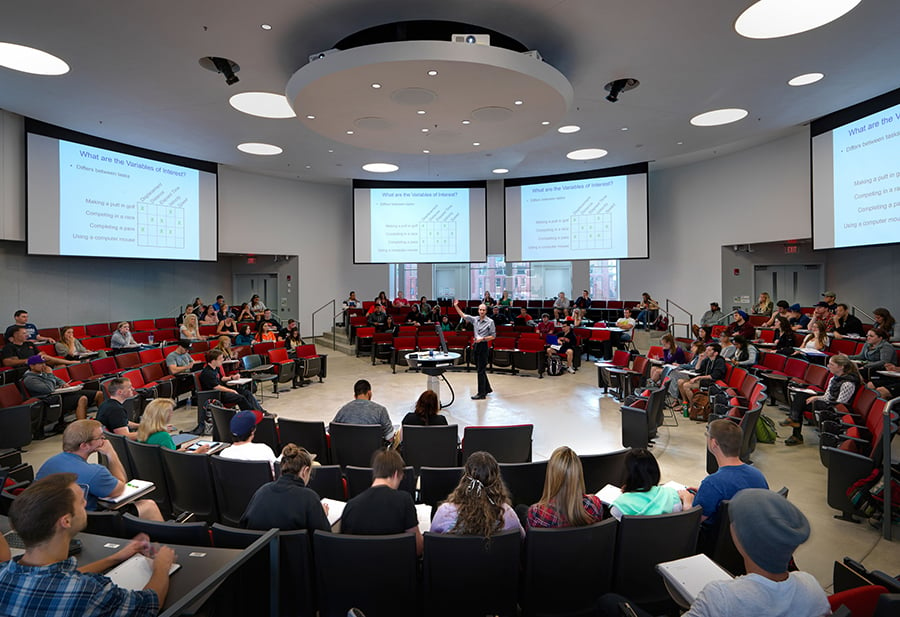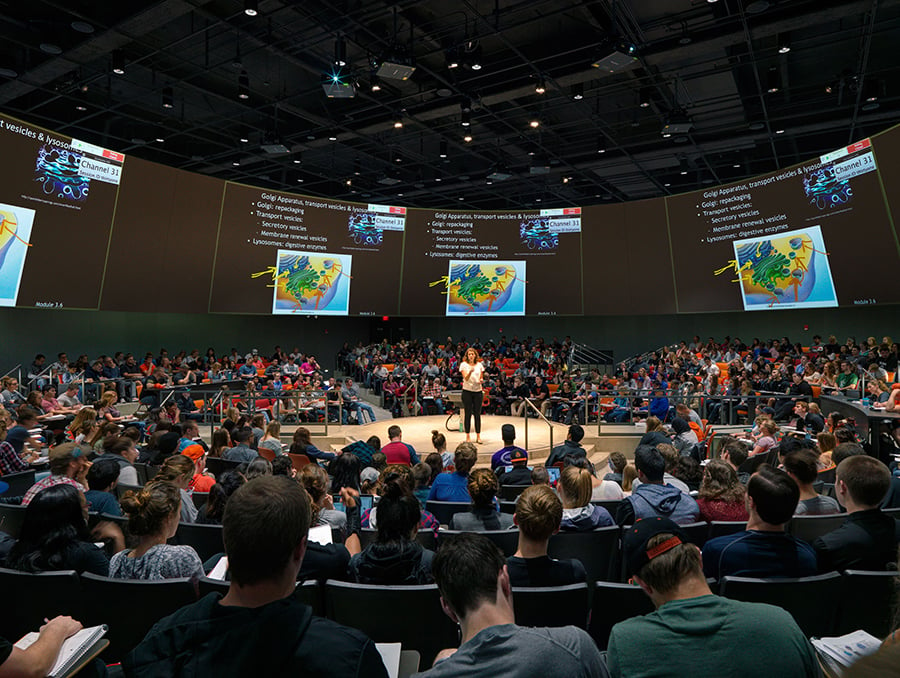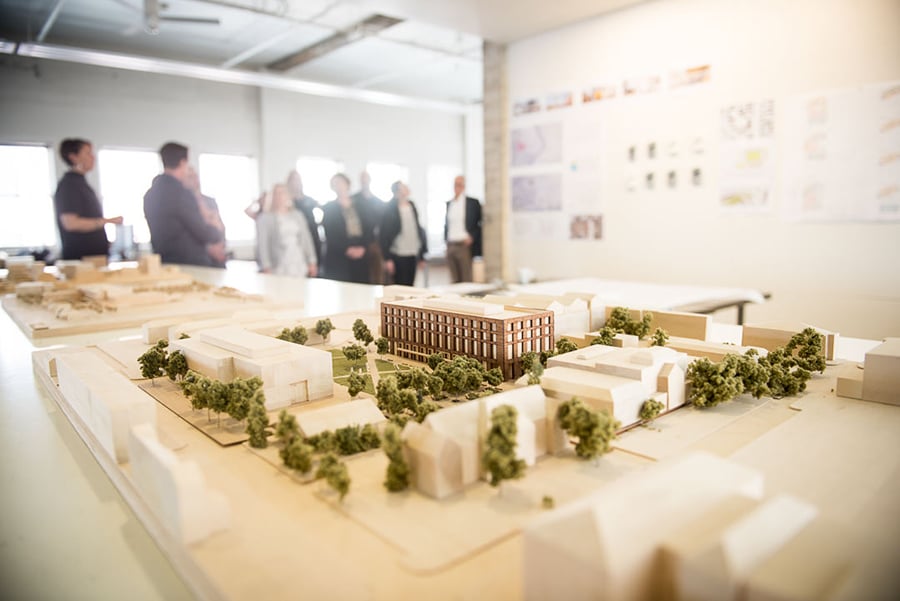
November 9, 2018
Innovation in Education Isn’t Just Technological—It’s Architectural Too
New types of classrooms—especially ones designed to be dynamic and fluid—are supporting new forms of pedagogy.

Technology today shapes students’ everyday experiences in ways previous generations never imagined possible. Yet higher education hasn’t kept pace. “Universities are the second-oldest continuously operating institution in the Western world, after the Vatican. It’s also the slowest to change,” according to Jon Dorbolo, a professor and associate director of technology across the curriculum at Oregon State University (OSU), and a panelist at a recent panel discussion.
As college enrollment declines for the sixth year in a row, how do institutions of higher learning race to catch up with the expectations of an ever more tech-savvy student body? On May 9, in the Portland offices of Bora Architects, Metropolis’s director of design innovation Susan S. Szenasy moderated a Think Tank discussion of the ways universities are shaping the future of learning through innovation and design, despite their historical “slowness.”
Questions that reframe the notion of education are being asked—and architects and institutions are responding. “There has to be a willingness to envision a different paradigm for teaching. We’re creating spaces to experiment with new ways of teaching and new environments to teach in,” said Michael Tingley, a principal at Bora. “Will we even be teaching 600-person lectures in 20 years? Let’s not build a dinosaur.”

Instead, Bora is creating flexible spaces like the Learning Innovation Center at OSU. With its radical lecture hall in the round, students look at each other, rather than at the backs of heads, and eight linked projectors allow for a 360-degree screen. To ensure easy proximity to professors, the design allows teachers to ring the room, easily reaching any student in a few steps, iPad in hand.
Facilitating interaction through dynamic environments is also key. As Amy Donohue, Bora principal said, “We work on a lot of campuses, and many of them are saying they need more active, engaged learning.” The new Global Innovation Exchange (GIX) at the University of Washington has interdisciplinary masters programs, where students develop real-world technology and innovative design thinking—and the space had to meet the curricular needs. The three-story building is thus centered around a makerspace core, where students do hands-on activities using tools like laser cutters and sewing machines. Overlapping zones, instead of doors, connect spaces. All of which is intended “to break down barriers between students and between spaces,” says Donohue, as well as to engage students.

Even notions of collaboration are being explored within these educational programs, as students learn that teamwork and understanding cultural differences are ever more important in a global environment. “In our 40-plus student cohort, there are 11 different countries represented,” said Linda Wagner, director of academic programs at GIX. “So working on a high-performing team is very intense for these students. We give them the tools, processes, and ways of interacting that allow them to be more successful.” Architects thus become facilitators of these experiences—rather than simply creators of spaces.
In other words, as this panel repeatedly returned to, innovation isn’t only happening on the educational front with technological connections; architects are also reshaping their approach to meet students’ needs. “We’re not just thinking about making a beautiful room, we’re thinking about how to craft experiences within environments,” said Tingley. “College is a time to make lifelong friends and explore new ideas, the moment when you’re most open to the world and its possibilities. So we’re creating environments that foster and facilitate that.”
The Think Tank discussions in Portland, Oregon, were held on May 9 and 10. The conversations were presented in partnership with Sunbrella, DXV/GROHE,Wilsonart, andDWR Contract.
You may also enjoy “Design, Bitches Transforms Two Warehouses Into a Versatile STEM Tutoring Facility and Community Center.”





